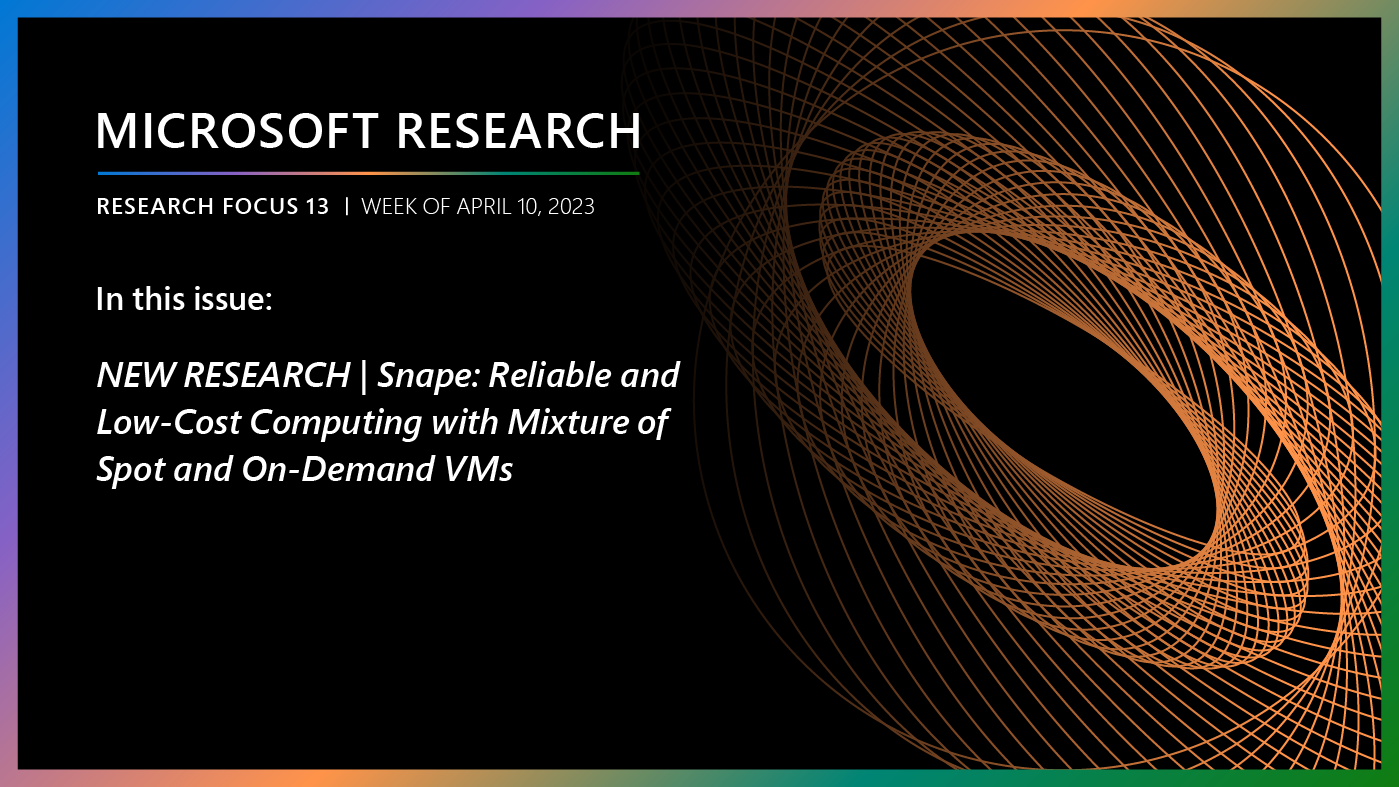By
For Sudipta Sengupta (opens in new tab), Microsoft Research is a magical place.
Spotlight: Microsoft research newsletter
“At Microsoft and the places I was at previously, my work has often been in collaboration with researchers and engineers, so I have benefitted a lot from interacting with and learning from my colleagues,” he says.
A principal researcher in Microsoft’s research lab in Redmond, Washington, Sengupta’s collaborations have resulted in such groundbreaking work in networking and data storage and management that he recently was named an IEEE Fellow (opens in new tab). That’s a prestigious honor bestowed only to less than 0.1 percent of the organization’s membership. He also has been named a Distinguished Scientist by the Association for Computing Machinery.
Sengupta says it’s “an honor and a privilege to be considered in the same league as current and past Fellows.”
And given what he’s achieved, it’s certainly no surprise.
“I am very glad for Sudipta to receive such a prestigious recognition,” said Jin Li (opens in new tab), partner research manager. “It is really uncommon for someone to have as broad and deep technical contributions as Sudipta has had, across different areas of computer science and advancing science as well as influencing practice.”
Sengupta’s focus most recently is in data storage and management (opens in new tab), providing key contributions to one of the most popular Windows Server 2012 features: Primary Data Deduplication (opens in new tab).
Unlike backup data deduplication, in which unchanged data is excluded from incremental backups, primary data deduplication works on the single primary copy of the data. Because Windows Server needs to run well on off-the-shelf hardware and because deduplication shouldn’t slow a user’s work session, this introduces unique challenges in terms of balancing server resource usage, deduplication throughput and deduplication space savings.
Consider what happens when you are developing a PowerPoint (opens in new tab) presentation. You revise your slides repeatedly and in the process are saving multiple versions of your presentation over and over again and sharing it with your colleagues. This creates duplicate data within and across users (you and your colleagues). The Primary Data Deduplication feature detects such duplicate data and avoids storing it over and over again, thus reducing space needed to save user files on the server.
Sengupta also made a key contribution in the field of computer networking — traffic routing in the Internet backbone and data centers. Known as oblivious routing, it’s a novel way of ensuring the network behaves predictably even when the flow of network data is unpredictable.
Sengupta received the IEEE William R. Bennett Prize (opens in new tab) and the IEEE Leonard G. Abraham Prize (opens in new tab) for his work in this area. He also has used traffic oblivious routing ideas to design VL2 (opens in new tab), a modern data center network that has been deployed across Microsoft’s cloud data centers. The foundational ideas in VL2 have been widely adopted across the industry, benefitting, in essence, just about anyone with an Internet-connected device.
Sengupta likened the solution to determining the best route when driving from Point A to Point B. If time is the most important factor, you would choose what you thought would be the most direct route. But if other drivers are sharing road segments with you for their trips at the same time, suddenly your most direct route may not be the fastest. However, the network of roads limits your options of alternate routes, and you may not know where other drivers are going or which alternate routes they are considering. So which route do you choose to avoid getting stuck in traffic?
Given the numerous variables in that Point-A-to-Point-B scenario, the two constants are the network of roads and the maximum rate at which cars enter and exit those roads. Such is the case in data centers or networks: the known constants are capacity and traffic ingress-egress speed (opens in new tab). Oblivious (or, “traffic unaware”) routing leverages the known constants to smartly and efficiently route traffic in a congestion-free manner, thus ensuring all data flows with rate guarantees even when the traffic is variable and unpredictable.
Sengupta’s work in the area of flash memory optimized key-value stores also broke new ground in how software could be optimized for Solid-State Drives (SSDs). When SSDs first entered the marketplace, the speed advantage of reading and writing data was undermined by the software doing the reading and writing, because traditional hard drives access data much differently than SSDs. Software at the time had been optimized for decades for reading and writing data to traditional hard drives but not SSDs, so much of the performance gains were lost to this inefficiency.
Sengupta and his colleagues approached this problem by redesigning software to exploit the benefits of flash and work around its peculiarities. By focusing on the fundamental building block of many applications — key-value stores (opens in new tab) — and demonstrating significant performance increases, Sengupta established the value proposition of a “flash-aware” approach for software design. As flash SSDs became standard in Microsoft’s data centers, his work found applications in multiple products and services, including Bing ObjectStore (opens in new tab) and Azure DocumentDB (see Schema-Agnostic Indexing with Azure DocumentDB (opens in new tab)).
“Sudipta’s research contributions have been recognized by prestigious awards in the community, incorporated into Microsoft’s products and services, as well as adopted across the industry,” Li said.
Sengupta stressed how working at Microsoft has been critical to his success.
“I’m very thankful for that collaboration,” he said.
“Microsoft Research is just simply a magical place in terms of inspiring excellence and nurturing research freedom,” he added. “Nobody tells me what to work on. I have the freedom to choose my projects. I’m still accountable, so I have to choose wisely.”
In his nearly nine years here, clearly he has.
“I’ve gotten to make research contributions and have impact on Microsoft products, having fun all along the way,” Sengupta said. “I simply couldn’t have asked for more. It’s a magical environment.”
Related:






